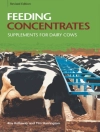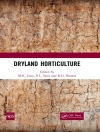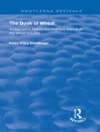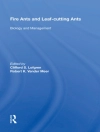The second edition of Anaesthetic and Sedative Techniques for
Aquatic Animals provided the fisheries and aquaculture industry
with vital information on the use of sedation and anaesthetics in
the avoidance of stress and physical damage, which can easily be
caused by crowding, capture, handling, transportation and release.
Now fully revised and expanded, the third edition has maintained
its accessible format and incorporates much new emphasis on:
* Fish pain and welfare: a rapidly developing area of
interest and debate
* Anaesthesia and legislation: with an international
perspective
Personnel involved in the aquaculture industry including fish
farmers, fish veterinarians, fisheries scientists and fish
biologists along with small animal veterinarians, animal laboratory
managers and government and regulatory personnel will find this
book a valuable and practical resource.
Inhaltsverzeichnis
1. Introduction.
2. Defining stress in aquatic animals.
3. Pain in aquatic animals.
.
4. The nature of anaesthesia, sedation and analgesia.
.
5. The features of anaesthetic agents and their legal use.
.
6. Anaesthesia and Legislation.
.
7. Factors affecting the response of aquatic ectotherms to
anaesthesia.
.
8. Anaesthesia of fish. I. Inhalation anaesthesia.
.
9. Anaesthesia of fish. II. Inhalation anaesthesia using
gases.
.
10. Anaesthesia of fish. III. Parenteral and oral
anaesthesia.
.
11. Anaesthesia of fish. IV. Non chemical methods.
.
12. Anaesthesia of Aquatic Invertebrates.
.
13. Anaesthesia of Amphibians and Reptiles.
14. Transportation and anaesthesia.
15. Concluding remarks
Über den Autor
Professor Lindsay G. Ross is Professor of Aquatic Physiology at the
Institute of Aquaculture, University of Stirling, Scotland,
UK
Dr Barbara Ross is Depute Headteacher, Braehead Primary,
Stirling, Scotland, UK
Bryony Ross is based at the Institute of Occupational Medicine,
Riccarton, Edinburgh, UK












